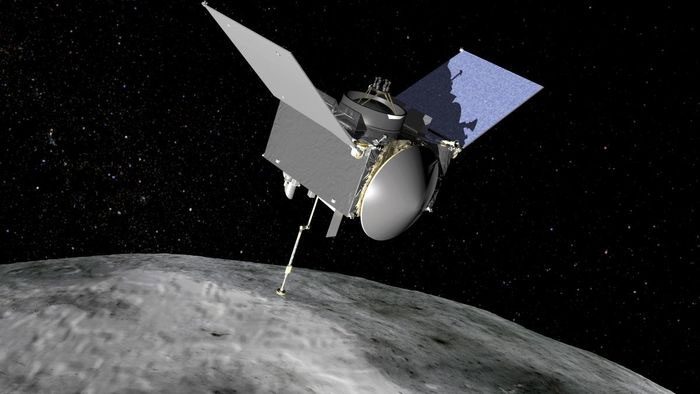The samples collected from Bennu will help us understand not only life on asteroids but also its connection to the existence of the Solar System.
The NASA spacecraft OSIRIS-REx arrived at Bennu in 2018 and departed in May 2021 on a two-year journey back to Earth. Bennu is an asteroid the size of a skyscraper, located 320 million kilometers from Earth. It is believed to have formed when a larger object broke apart, with at least some of its material coming back together. In the case of Bennu, the shape it has taken resembles a rough diamond, with a distinct ridge along its equator.

NASA’s OSIRIS-REx spacecraft. (Photo: NASA).
During its data collection journey, the OSIRIS-REx spacecraft detected traces of hydrogen and oxygen molecules—signs indicating the potential for life—on the rocky surface of this asteroid.
Astronomer Dante Lauretta from Northern Arizona University, and a member of the OSIRIS-REx science team, stated: “We are looking for clues that explain why Earth is a habitable planet. We believe that all the necessary materials for life were brought to our planet early on by these carbon-rich asteroids. And of course, the biggest question that drives my scientific research is the origin of life. What is life? How did it originate? And why does Earth have life? At carbon-rich Bennu, we have found these materials using the remote sensing instruments we employed while on the asteroid. We believe that the seeds of life that this asteroid possesses appeared during the early days of Earth. We are here today to reflect on that remarkable history.”
According to NASA’s website, the spacecraft is set to return to Earth on September 24 at 8:42 AM (local time), traveling at a speed of approximately 44,498.3 km/h.
Notably, a new comprehensive spectral survey of this asteroid, led by NASA’s Goddard Space Flight Center, has confirmed the presence of organic materials and carbon compounds prevalent on the surface of Bennu. This is the first specific discovery of such materials in a near-Earth asteroid. This finding supports the hypothesis that asteroids and meteorites may have delivered at least some components necessary for life to Earth.
According to the NASA science team, this aligns with the carbonate salts found in chondrite meteorites that can alter in water. Additionally, some of these features are several meters long and a few centimeters thick. Researchers state that this is evidence suggesting that water once flowed freely over the rocks, indicating that a hydrothermal system of asteroid scale once existed on this asteroid.
Bennu was selected for monitoring among 500,000 asteroids in the Solar System due to its size being suitable for scientific studies and being one of the oldest asteroids discovered by NASA.
According to Lauretta, OSIRIS-REx will open up opportunities for scientists to determine whether life exists on Mars or Europa—the celestial bodies most likely to harbor extraterrestrial life that humans have ever known.





















































